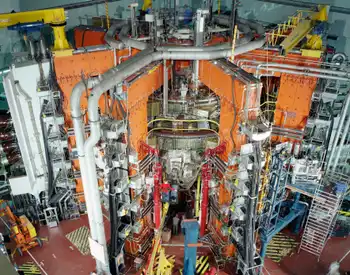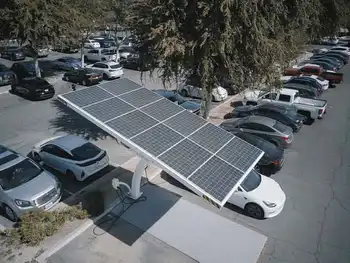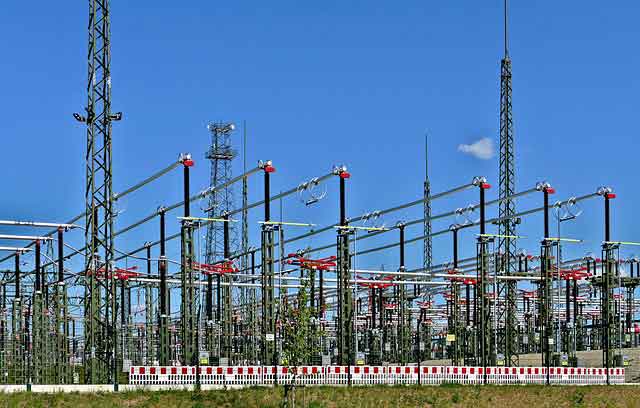European power to key on offshore wind
This is the key finding from the European Wind Energy Association's (EWEA) (Brussels, Belgium) 'Oceans of Opportunity' report, presented to the European Commission this week in Stockholm, Sweden. The report states that more than 100 gigawatts (GW) of offshore wind projects are in development or being planned in the E.U.-15 alone.
Currently, offshore windfarms supply only 0.3% of the European Union's total electricity demand, but the EWEA claims that offshore windfarms have the potential to supply between 12.8% and 16.7% of total E.U. electricity demand by 2030. This equates to a total installed offshore wind capacity of 150 GW, with electricity production standing at 563-terawatt hours (TWh). Such large-scale wind generation would eliminate more than 200 million tonnes of CO2 emissions every year.
"There is huge developer interest in offshore wind power," said Arthuros Zervos, President of the European Wind Energy Association. "The scale of planned projects is far greater than most people realize."
Speaking to Industrial Info Resources, a spokesperson from Vattenfall Wind Power commented on the offshore potential: "Vattenfall wants to make electricity clean as part of its commitment to neutralize its impact on climate change by 2050, and therefore wants to make the most of Europe's renewable electricity resource," he said.
"That means it wants to build on its existing fleet of operating offshore windfarms in partnership with relevant governments and stakeholders. This would go some way to delivering Europe's impressive offshore wind potential in a sustainable manner, and so ensure that offshore renewables makes an important and lasting contribution to Europe's energy needs."
However, to fully exploit the opportunity is going to require massive investment, with an annual target for investment in wind turbines of 16.5 billion euros (US$24.2 billion). There are also obstacles to be overcome, says the EWEA, citing the need for a European offshore grid, increased political support, and the improvement of the planning processes currently in place in many E.U. member states.
According to the EWEA, more investment for offshore wind projects will be required, as 50%, or 360 GW, of current E.U. electricity capacity needs to be constructed in the next 12 years to replace older European power plants and to accommodate rising energy demand. The report says that 40 GW of this demand can be met by 2020 if there is an average increase of 28% in offshore installations. The EWEA pointed out that something similar already occurred in the onshore wind market, where capacity grew 32% from 1992 to 2004, increasing from 215 megawatts (MW) to 5,749 MW.
Endorsing the report's findings, E.U. Energy Commissioner Andris Piebalgs said: "Harnessing the winds off Europe's coasts... would provide an answer to the global challenges of climate change, depleting indigenous energy resources, increasing fuel costs and the threat of energy-supply disruptions. The European Commission is committed to doing everything we can to support offshore wind developers and make sure their planned projects come to fruition."
In related news, the British Wind Energy Association (London) has admitted that new UK wind projects are being blocked by what it called a 'vocal minority.' The admission follows ongoing complaints from wind energy companies that have criticized the slow and uneven UK planning process.
Just last month, the government announced a £1 billion (US$1.65 billion) war chest to speed up the rollout of onshore windfarms, claiming the new funds should accelerate the building of onshore wind projects that have been hit by the credit crunch, particularly small and mid-sized windfarms. The government has also promised to make the approval process for new windfarms a faster and smoother process across the country's various local authorities.
Related News

Is this the start of an aviation revolution?
LONDON - Aviation is one of the fastest rising sources of carbon emissions from transport, but can a small Canadian airline show the industry a way of flying that is better for the planet?
As air journeys go, it was just a short hop into the early morning sky before the de Havilland seaplane splashed back down on the Fraser River in Richmond, British Columbia. Four minutes earlier it had taken off from the same patch of water. But despite its brief duration, the flight may have marked the start of an aviation revolution.
Those keen of hearing at the riverside on…




